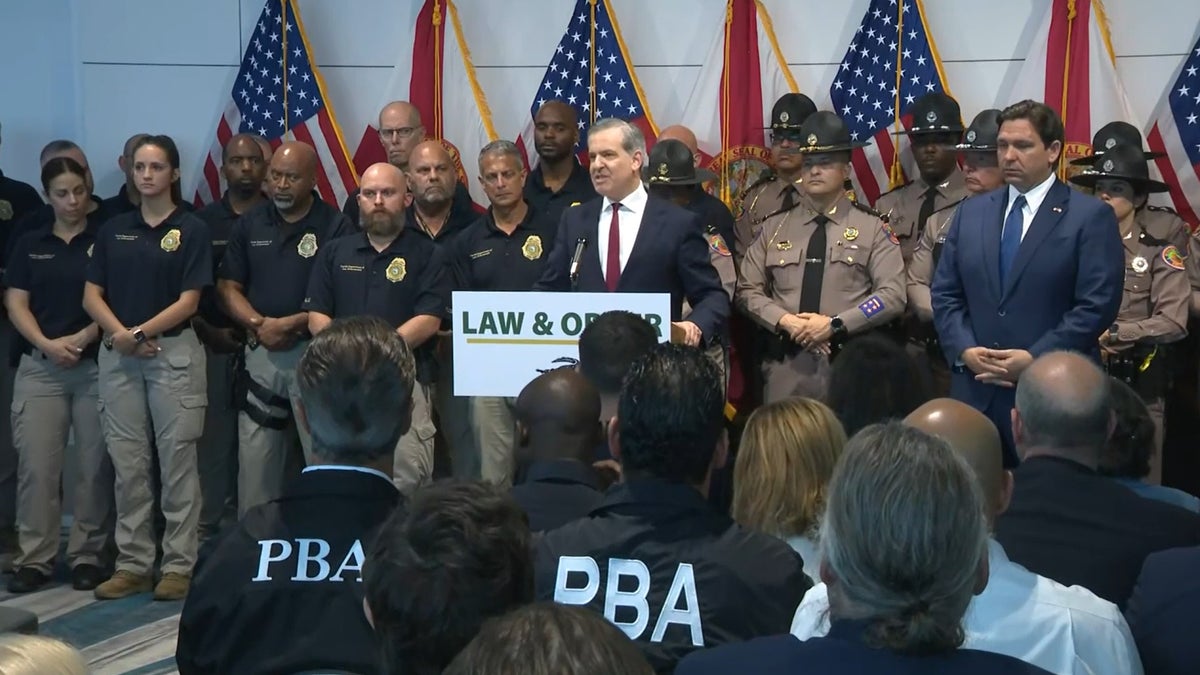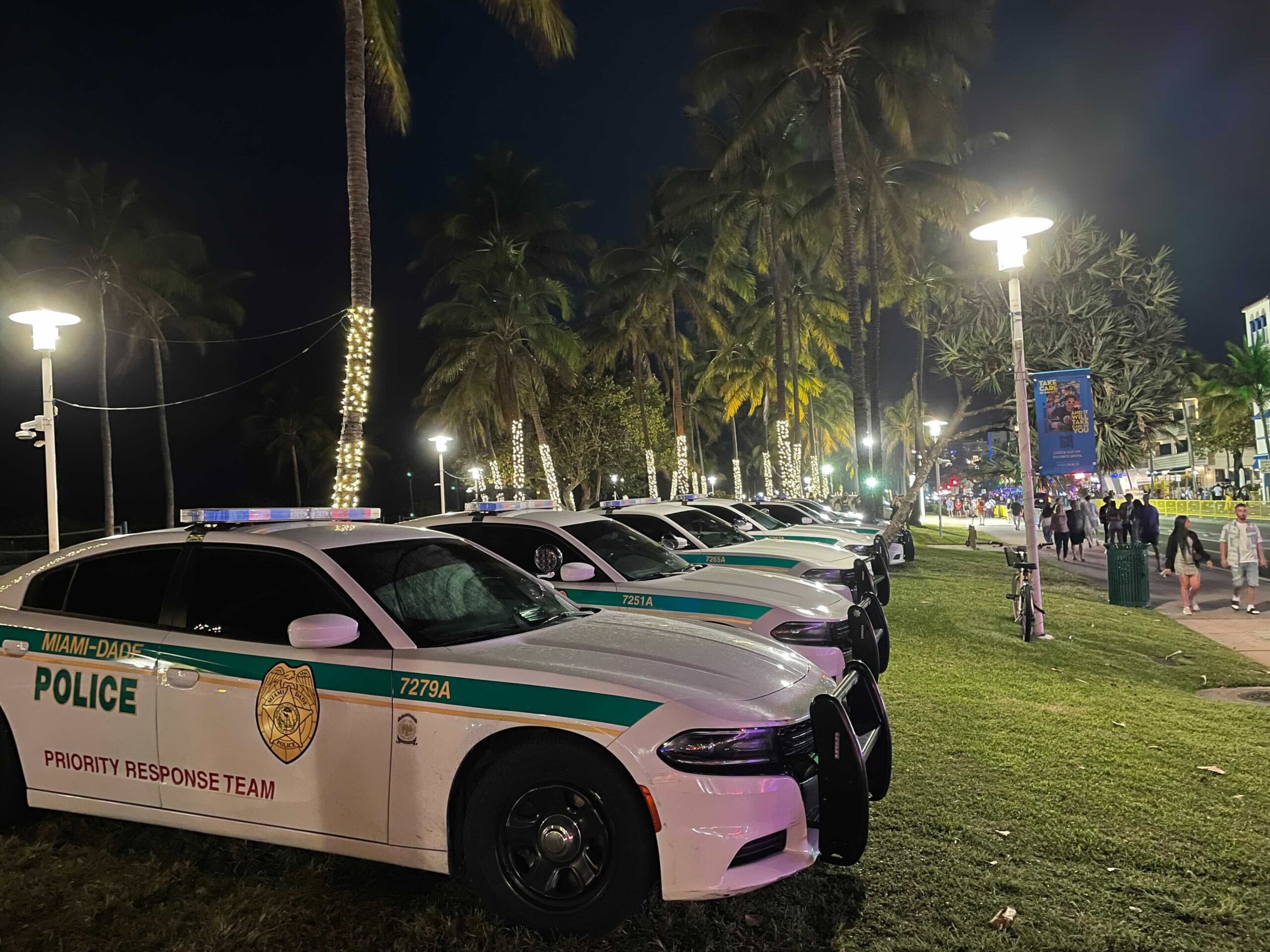NEWYou can now listen to Fox News articles!
Florida has long been a popular destination during the winter months. Whether the panhandle’s beaches, the theme parks of Orlando or the quieter Gulf Coast, the state had something for everyone.
But for years, everyone knew that Miami Beach was best avoided in the “spring break” months of March and April. South Beach, in particular, on the southern tip, was a rowdy place to be. Fights, garbage and arrests were all standard. The crowds were excessive and felt dangerous. It was certainly not somewhere for families to visit.
This year, Steven Meiner, the new mayor of Miami Beach, elected just in November, pledged to put an end to that reputation.
The first night of Miami Beach’s spring break curfew saw smaller crowds, which thinned out early and were completely gone after the midnight shutdown. (Michael Ruiz/Fox News Digital)
Our family vacationed on Miami Beach a few weekends ago to see for ourselves. The change from previous years was dramatic.
Police were very present but quietly so. It didn’t seem like a scary environment that required police presence, just that they were around in case of any problems. The city felt safer but also cleaner and more organized. Disorderly crowds were nowhere to be seen.
I had assumed they achieved this result with more arrests. But, in fact, arrests were down this year from previous years. It turns out deterrence played an important role. The city ran an ad campaign, that had gone viral online, “breaking up” with spring break.

Miami Beach Mayor Steven Meiner, at the podium, with Gov. Ron DeSantis, right, during a spring break law enforcement crackdown. (Fox News Digital)
A memorandum from Rickelle Williams, interim city manager, a few days ago, noted, “While some of the measures had been employed in the past, the totality of the 2024 spring break measures was unprecedented, particularly with respect to the ‘Miami Beach is Breaking Up with Spring Break’ campaign that reached a global audience and garnered an estimated 19.8 billion media impressions.”
POLICE IN FORT LAUDERDALE REPORT SURGE OF SPRING BREAKERS AMID MIAMI BEACH CRACKDOWN
I spoke with Mayor Meiner about the city’s success. He told me “the ad campaign was instrumental” to the positive outcome. The ad campaign warned people coming to vacation on Miami Beach that the city wouldn’t stand for bad behavior. Just saying so helped control that bad behavior.
Of course, it couldn’t be done with a good ad alone. Meiner told me that they had a united front. From government agencies to businesses, everyone wanted a safer, happier spring break scene.
“Everyone is saying enough is enough,” Meiner said. “Law and order are priority number one. Gov. Ron DeSantis visited several times and said he would provide whatever the city needed. The state was a great partner and came through for us. The county gave us many police officers. Everyone was on the same page.”
As part of Meiner’s 14-point plan, neighboring police departments stepped in to help too: “Law enforcement agencies providing additional resources to the Miami Beach Police Department, including the Florida Highway Patrol, Miami-Dade. County Police Department, City of Miami Police Department, and Coral Gables Police Department, among other jurisdictions.”
It makes sense. When bad behavior is happening on Miami Beach, it could easily spill over into other areas.
Most of all, the City of Miami Beach simply enforced laws that were already on the books. Open container laws and the city’s noise ordinance already existed, but demanding they be followed went a long way to curbing other law-breaking.
The mayor told me the city had “no fatalities, no stampedes,” during the spring break time, as they had had in previous years.
The message of the Miami Beach cleanup to other cities is: It doesn’t have to be this way.
Miami Beach has shown that good coordination among government agencies leads to good results. But they’ve also shown that enforcing the law, and telling visitors they plan to do so, leads to more law-abiding behavior.
Much of it is not rocket science. Cities that have allowed themselves to spiral into being targets for crime largely don’t enforce existing laws.
Miami Beach has drawn a line in their soft, white sand: Not here, not anymore.
